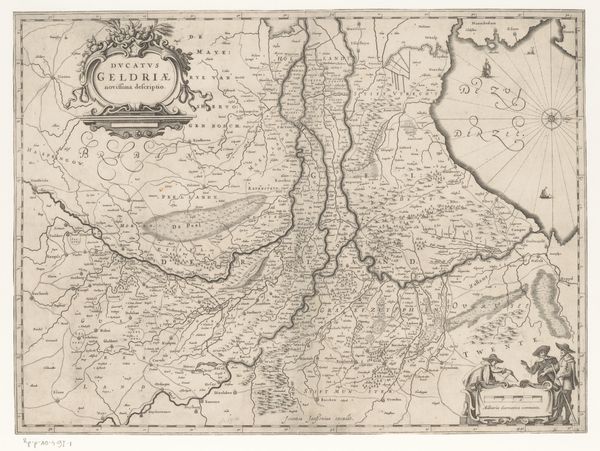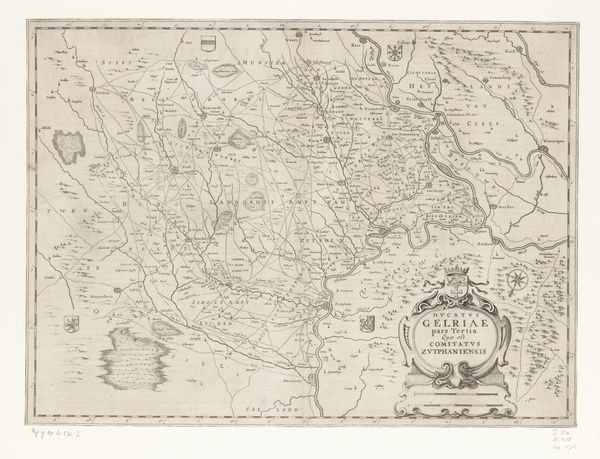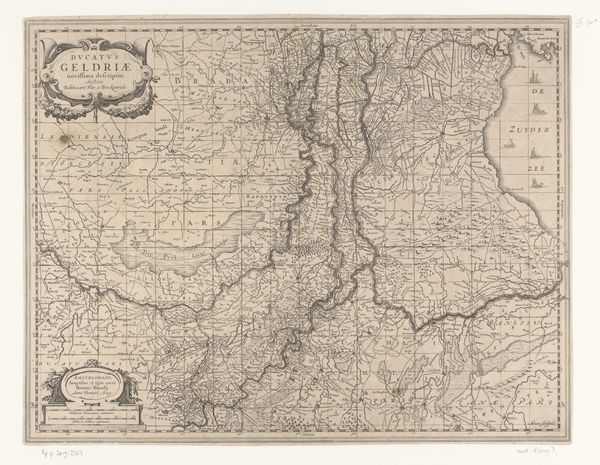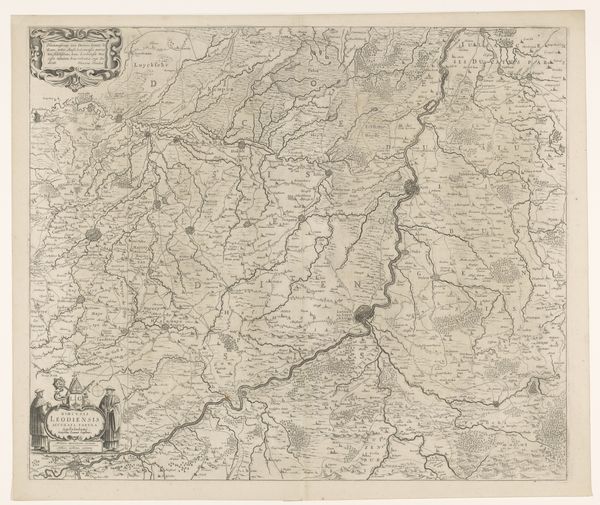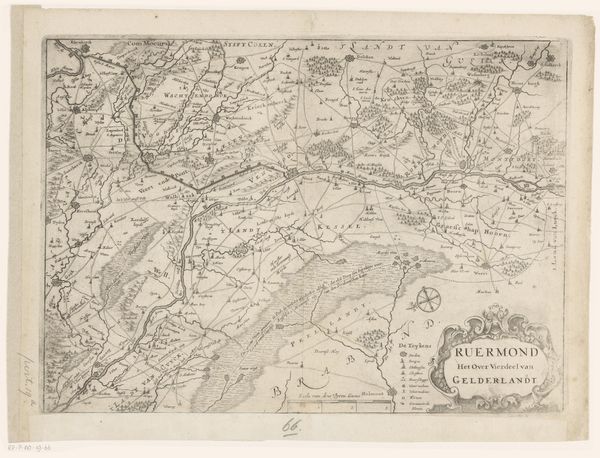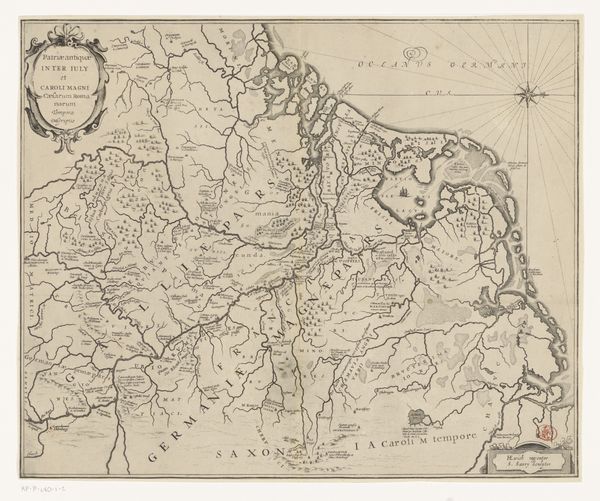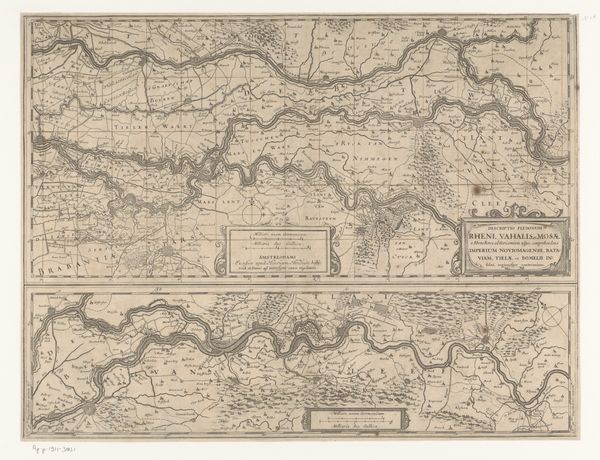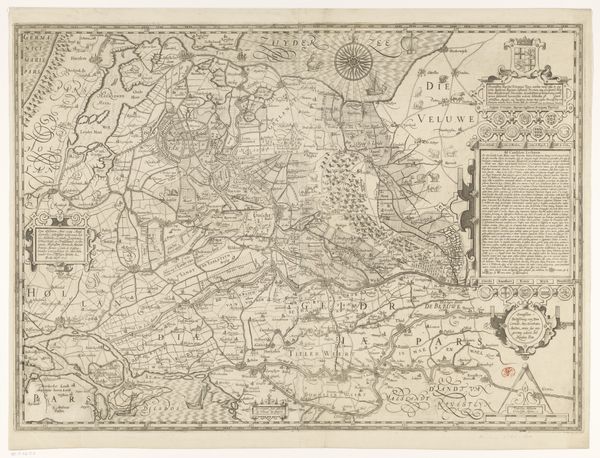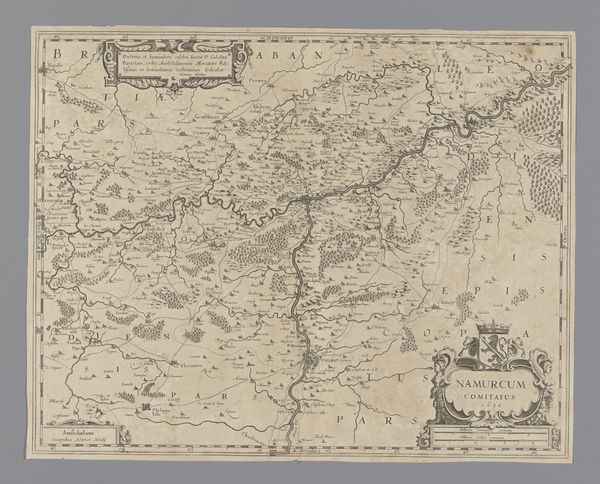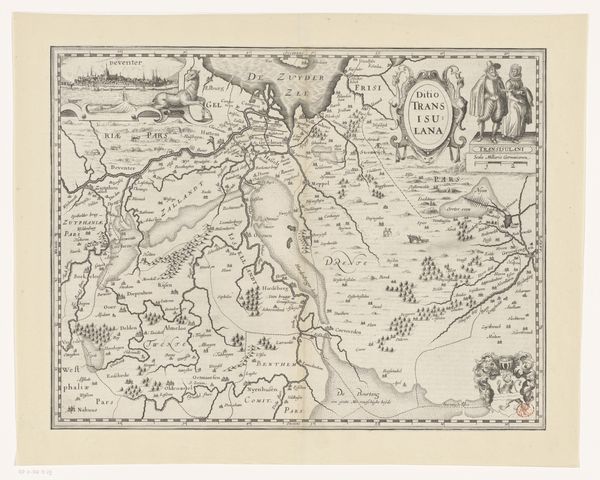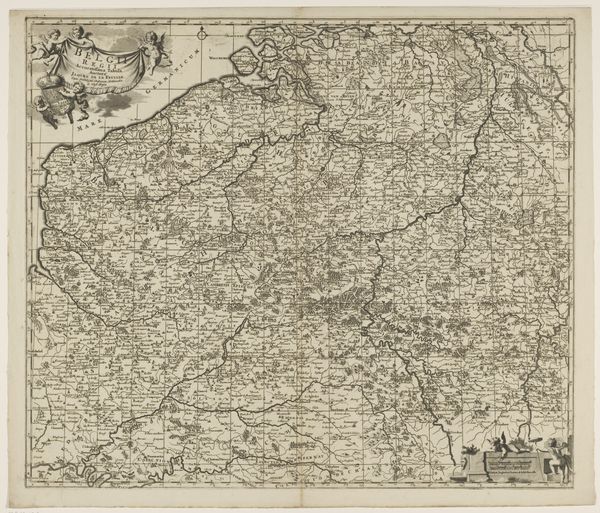
graphic-art, print, engraving
#
graphic-art
#
dutch-golden-age
# print
#
pen sketch
#
old engraving style
#
landscape
#
geometric
#
engraving
Dimensions: height 386 mm, width 520 mm
Copyright: Rijks Museum: Open Domain
Curator: Here we have an intriguing map, “Kaart van het Overkwartier van Gelre,” an engraving that offers a bird's-eye perspective of a portion of the historical Duchy of Guelders. It dates from around 1644-1680 and is held at the Rijksmuseum. Editor: It looks incredibly precise, yet somehow fragile. The lines are so fine. I wonder about the paper itself – what it was like when new, what processes of making contributed to the aesthetic that we're viewing today. Curator: Indeed. The materials would have been meticulously prepared, reflecting the importance of cartography in asserting political and economic power. And if we look closely, we see symbolic elements: small illustrations of buildings to mark cities, perhaps gesturing toward their prominence. Editor: Yes, these aren’t merely geographic renderings; these are representations of authority. Think about the skill needed to transfer knowledge onto copper or a similar material. Who trained them and were their tools common for their period? The labor really shifts my perspective. Curator: The creation of such maps also reflected a specific worldview, mapping not only physical space, but also the perceived order of the world. Notice how dominant the river is. It creates a linear structure through the territories represented here, evoking trade and strategic access. Editor: Water is so key for resources, right? The rivers connect things while serving as a border; power and practicality exist at the same time. Did the commissioners or rulers want the people of their territory to view their surroundings in this exact, visually unifying way? Curator: Absolutely. Maps served as instruments of control. Their circulation created a shared, yet controlled understanding of geographical and political space among different groups. What seems merely informative is loaded with power. Editor: Precisely. Considering the material, and its distribution: did it affect land ownership? Trade routes? Or even the simple navigation practices of everyday lives at all societal levels? The ripple effect is fascinating. Curator: It's a powerful lens through which to see history and the relationship between material culture and psychological landscape. Editor: By analyzing the material execution, it enhances how the work existed in the Dutch Golden Age, a unique time where people interacted and functioned. It shows how maps became, more than their apparent intentions, things.
Comments
No comments
Be the first to comment and join the conversation on the ultimate creative platform.
